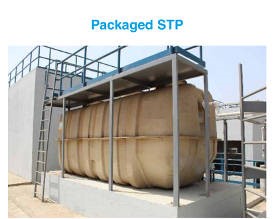
Sewage Treatment Plant for Apartments
Sewage treatment is the process of eliminating pollutants and toxic substances from domestic wastewater, which includes sewage from toilets, bathrooms, kitchens, and other sources. This sewage must be cleaned properly before being discharged into the Environment through sewers.
Various physical, chemical, and biological methods are used to treat sewage before it may be considered environmentally benign.
What is the Importance of STP in Apartments?
More than 10% of the world’s population consumes foods irrigated with untreated wastewater from homes, according to the World Health Organization (WHO).
What difference does this information makes to us, city dwellers, who drive luxury cars and live in swanky highrises?
It’s because we may be eating vegetables, rice, and wheat grown in water contaminated with some of the world’s most heinous toxins, as well as faeces and urine.
In most Indian metropolises, wastewater treatment is a dystopian nightmare. Untreated sewage from apartments and residences is, in fact, the leading cause of water contamination in India. According to a recent report by the “Central Pollution Control Board”, the majority of the sewage produced by India’s 135 billion people is discharged without treatment, and the country has less than a thousand sewage treatment plants.
Just think of this!
This is the main reason sewage treatment plants (STP) for apartments are a must-have! This and only this will allow you to be sure that the wastewater produced by your apartment is not being let loose into the environment untreated, polluting water bodies and drinking water reserves needed to ensure clean drinking water for all of us as well as our children, and grandchildren.
Another good reason for having STP, especially if you are not awake enough to realize the importance of protecting our fast-dwindling drinking water resources, is that new environmental laws have now made this mandatory.
In Mumbai, for example, housing projects with more than 20,000 sq metres are given clearance only upon the condition that they treat solid waste in-house using sewage treatment plants for residential buildings. In Telangana, the building plans for commercial, industrial and residential structures constructed in 10,000 square metres and above should have an STP on-site. In simple terms, the Greater Hyderabad Municipal Corporation (GHMC) is now mandating an STP for apartments with more than 100 flats.
These are the revised standards that need to be followed for treated wastewater –
- BOD (Biochemical Oxygen Demand) level – 10mg/L
- pH value – 5.5-9.0
- Total Suspended Solids – 10mg/L
- Nitrogen – 10mg/L
- COD (Chemical Oxygen Demand) – 50
- Faecal Coliform – 230 per 100 millilitres
The following are the reasons behind the requirement of STPs
1: Sewage treatment is a straightforward and cost-effective procedure. It is simple to maintain and carry out in an apartment.
2: Sewage treatment plants will undoubtedly improve people’s quality of life.
3: Sewage treatment plants can provide clean, reusable water that can be used for laundry, cleaning, and watering plants, among other things.
4: Because the technology is incredibly steady and efficient, the plant produces no odours or noise.
5: Wastewater treatment has become a global issue since two million children under the age of five die each year from waterborne infections. Dysentery, gastroenteritis, and cholera can all be caused by microscopic organisms found in sewage. The treatment technique can eliminate 97% of these dangerous tiny pollutants.
6: The effluent is then safely dumped into the sewage system after being treated. The amount of wastewater released into the environment from residential structures is minimized, thereby protecting the earth’s most valuable resource-water!
Treatment process

Step 1: The wastewater is screened in the first stage to eliminate plastic bottles, wrappers, and other large items.
Step 2: Sedimentation is the first step, in which solids sink to the bottom and lighter particles, such as oil, float to the surface, where they can be easily collected with skimmers.
Step 3: Filter made of activated sludge or a filter that has been treated to allow anaerobic bacteria to absorb biodegradable soluble pollutants.
Step 4: Disinfection and elimination of nutrients and sediments in the tertiary stage. In this stage, all advanced treatments are combined to remove and reduce pathogens, nitrogen, phosphorus, and other inorganic compounds by disinfecting the water chemically, through ultraviolet light, or micro filtration, or Reverse Osmosis before releasing the sludge for reuse. The sludge is then treated in digesting tanks with anaerobic bacteria and later used as fertilizer.

Conclusion
By 2025, the world’s population is expected to reach a staggering 8 billion people. With the current water supply, supporting so many people on Earth will be difficult. As a result, the wastewater treatment procedure becomes even more critical. Taking spent water, filtering away dangerous impurities, and returning safe, clean water to the source might also alleviate future water shortage concerns.
What are the Benefits of Sewage Treatment Plants for Residential Building?
A sewage treatment plant is a plant designed to remove most contaminants from household wastewater, a collection of sewage from toilets, bathrooms, and kitchens.
This treated wastewater is then safely discharged into the sewer lines. The amount of wastewater from the residential buildings that is usually released into the environment is reduced, thus nurturing the earth’s most precious resource- water!
Sewage Wastewater Demystified
Household sewage wastewater is a mix of microorganisms that can cause serious diseases as well as chemicals like detergents, soaps, cleaning liquids, etc.
This wastewater is usually grey in colour, has a musty odour and a solids content of about 0.1%. This solid part is a mixture of faeces, urine, grease, food particles, oil, toilet paper, salts, dust, metals, detergents, and sand.
Due to the complex nature of contaminants, a number of physical, biological, and chemical wastewater treatment processes are used to treat household wastewater before it is in any shape to be discharged into the environment.
Cost of Sewage Treatment Plant for Apartments
Sewage treatment Plant for apartments is an eminently affordable process. It yields clean reusable water which can be used for washing, cleaning, watering plants, etc. The STP also usually doesn’t cost much to maintain.
Reach out to MN Aqua Chem Solutions for installing an STP at your apartment complex. The MN Aqua team will inspect your facility and design and operationalize the perfect STP for your needs. Apart from designing and operationalizing, MN Aqua also carries out desludging and service at least once a year so that the STP functions without any problems.
STPs are the best bet for a sustainable ‘water’ future, not to mention mandatory for larger apartment complexes. The sewage treatment plant cost in India is sustainable too. It is thus prudent to make STPs a way of life to allow water to come full circle and not flow to drains untreated.




